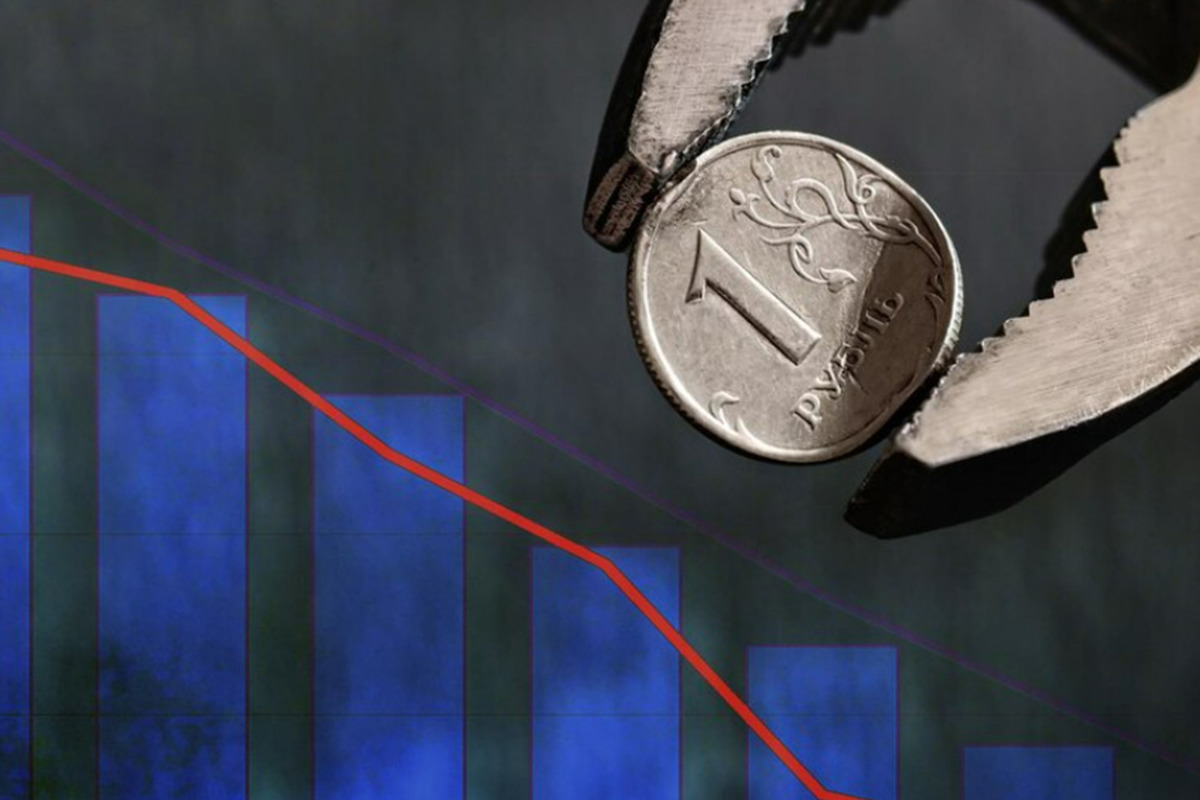Six factors influencing the weakening of the ruble are named
[ad_1]

It’s time for Russians to get used to three-digit dollar and euro exchange rates
Trading on the Moscow Exchange on Friday ended at around 100.5 rubles per dollar. The euro ended the last trading day at almost 106 rubles. At the same level, the Bank of Russia set exchange rates for the weekend. Last week, the ruble again broke through the “psychological” border, reached seven-week lows and, according to experts, this is not the limit. Where will the fall of the Russian currency stop?
Six key economic factors that helped the dollar exchange rate enter the three-digit zone were listed by BitRiver financial analyst Vladislav Antonov. Firstly, oil prices were a strong negative for the domestic currency. During the third quarter, the price of a barrel of Brent hovered above $90, but is currently trading around $84. Secondly, balance of payments data does not give reasons for confidence in the future: exports fell in 2023, while imports recovered sharply. The third negative factor is sanctions against Russia: both restrictions already introduced and those just being discussed have an impact. For example, the EU is now threatening to introduce restrictions on transactions with Russian diamonds in the 12th package of sanctions.
The fourth factor is the end of the tax period and the imbalance between supply and demand that arose in the foreign exchange market because of this. Let us remind you that between the 25th and 28th of each month, exporters transfer foreign currency earnings into rubles and pay taxes: the demand for the national currency increases and strengthens its exchange rate. At the moment, the previous tax period has ended, and the new one has not yet begun. The fifth factor in the weakening of the ruble was the actions of stock speculators remaining on the Russian market. And the sixth is related to the dynamics of the dollar exchange rate on the world market: the American currency has strengthened against all monetary units in anticipation of a decision to raise the Fed rate (the American regulator). “The dollar on the global foreign exchange market the day before rewrote its annual maximum, and all reserve currencies – the euro, the yuan, the yen – fell to their annual bottom against it,” said Mikhail Zeltser, an expert on the stock market at BCS World of Investments.
What is the future fate of the ruble is a question that causes fierce debate among analysts. Some of them argue that the entry of the dollar exchange rate into the three-digit zone will be short-lived, because this will prompt the authorities to take measures to cool the foreign exchange market. Moreover, there is an example: in March last year, the “powers that be” already did this and were very successful for the ruble. Other experts argue that it is time for Russians to get used to three-digit dollar and euro exchange rates. The most surprising thing is that both experts refer to the words of politicians. The fact is that the “powers that be” have made many contradictory statements regarding the ruble exchange rate over the past month and a half. Thus, in mid-September, Russian President Vladimir Putin, at a meeting on the draft federal budget for 2024–2026, instructed the government and the Central Bank of the Russian Federation to take measures to strengthen the ruble. However, already in October, presidential press secretary Dmitry Peskov said that the ruble exchange rate was not a cause for concern and called on citizens to get used to living without paying attention to the behavior of the dollar and euro. And at the recent Moscow Financial Forum, the head of the Ministry of Economic Development, Maxim Reshetnikov, proposed building a “more complex system” of currency control following the example of China, where there is a kind of “membrane” between the domestic and foreign currency markets, which actually implies two exchange rates for the national currency. However, other representatives of the government’s financial bloc and the heads of state banks spoke out against this plan. It seems that for now, in the invisible dispute about the fate of the ruble, the position of the head of the Central Bank of the Russian Federation, Elvira Nabiullina, is winning, regularly emphasizing that the free foreign exchange market is a blessing and insurance against external shocks.
So our ruble floats, blown off course by various winds. So you shouldn’t be surprised that even holidays in China affected the ruble. According to Freedom Finance Global leading analyst Natalya Milchakova, on Monday on the Moscow Exchange the dollar will be in the corridor of 99-101 rubles. Further, during the week, the American currency may drop to 97.5-98 rubles, as China will return from vacation after the long holidays, and Chinese banks will again begin making payments in yuan, and the price of oil will gradually stabilize after the collapse in the corridor of $84-86 per barrel.
[ad_2]
Source link






